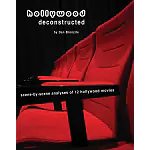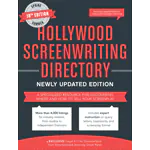Getting to the top in the movie world can be tough, but you can rest assured that all your hard work will be worth it once your screenplay is in the hands of the right people. However, writers should strive to learn more, read more and take all the help they can get along the way in order to develop their skills and achieve their dream.
If you are a scriptwriter, there are plenty of things you can do to make life a little easier. You may want to look into working methods of top scriptwriters, which may give you some ideas to improve your work. You may also want to try screenwriting software, which is used by many successful professional scriptwriters.
Right from your first try, scriptwriting software can make a huge difference. Why? Its simple. If you fail to send your scripts in the recognized format, you might be finished before you even start. All that hard work will be lost. There is a fair chance that you already know how to write a script, but this may not be enough if you want to make it in the movie world.




Jackie Wolf-Enrione
Your advice is great. Writing 1st ever script. Backed into your conclusion. Breaking into this business for unknown is tough enough. No matter how brilliant your script, if your presentation isn’t professional, chances are it will get tossed in the round file.
Professional software evens the playing field.